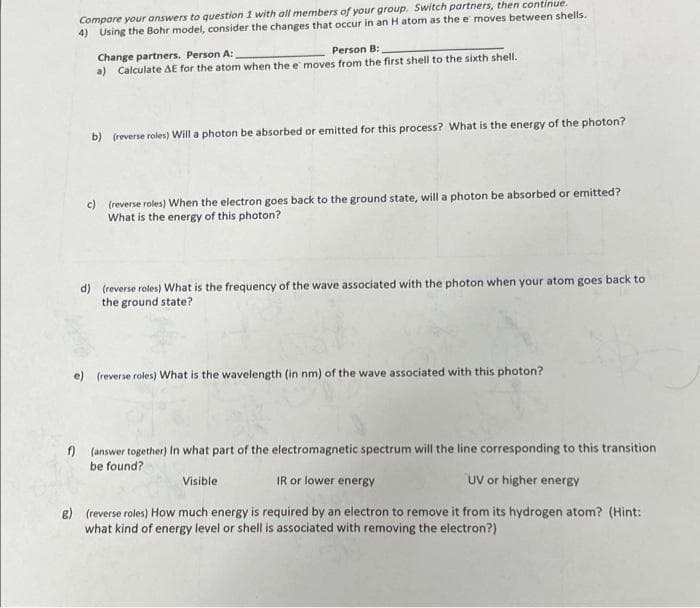Compare your answers to question 1 with all members of your group. Switch partners, then continue. 4) Using the Bohr model, consider the changes that occur in an H atom as the e moves between shells. Change partners. Person A: Person B: a) Calculate AE for the atom when the e moves from the first shell to the sixth shell. b) (reverse roles) Will a photon be absorbed or emitted for this process? What is the energy of the photon? c) (reverse roles) When the electron goes back to the ground state, will a photon be absorbed or emitted? What is the energy of this photon? d) (reverse roles) What is the frequency of the wave associated with the photon when your atom goes back to the ground state? e) (reverse roles) What is the wavelength (in nm) of the wave associated with this photon? f) (answer together) In what part of the electromagnetic spectrum will the line corresponding to this transition be found? Visible IR or lower energy UV or higher energy
Electron Affinity
When an element undergoes a chemical reaction, it either gains energy or loses energy. This gain or loss of energy is due to the phenomena that occur at atomic level. During reaction, atoms either gain electrons from other atoms or lose electrons to other atoms, and in that process, energy is produced.
P-Block Elements
Elements which are present on the right side of the periodic table are called p-block elements. In addition to the noble gases, they include the families of boron, mercury, nitrogen, oxygen and fluorine. These elements have diverse real-life implementations that we regularly experience around us.
Metals and Non-metals
The periodic table is composed of metals, semi-metals and nonmetal elements. The physical and chemical properties of metals and nonmetals differ from each other. The study of metals and nonmetals will help one to understand the appropriate application of the particular element.
Please do all parts of question it is a single question

Step by step
Solved in 3 steps with 3 images









